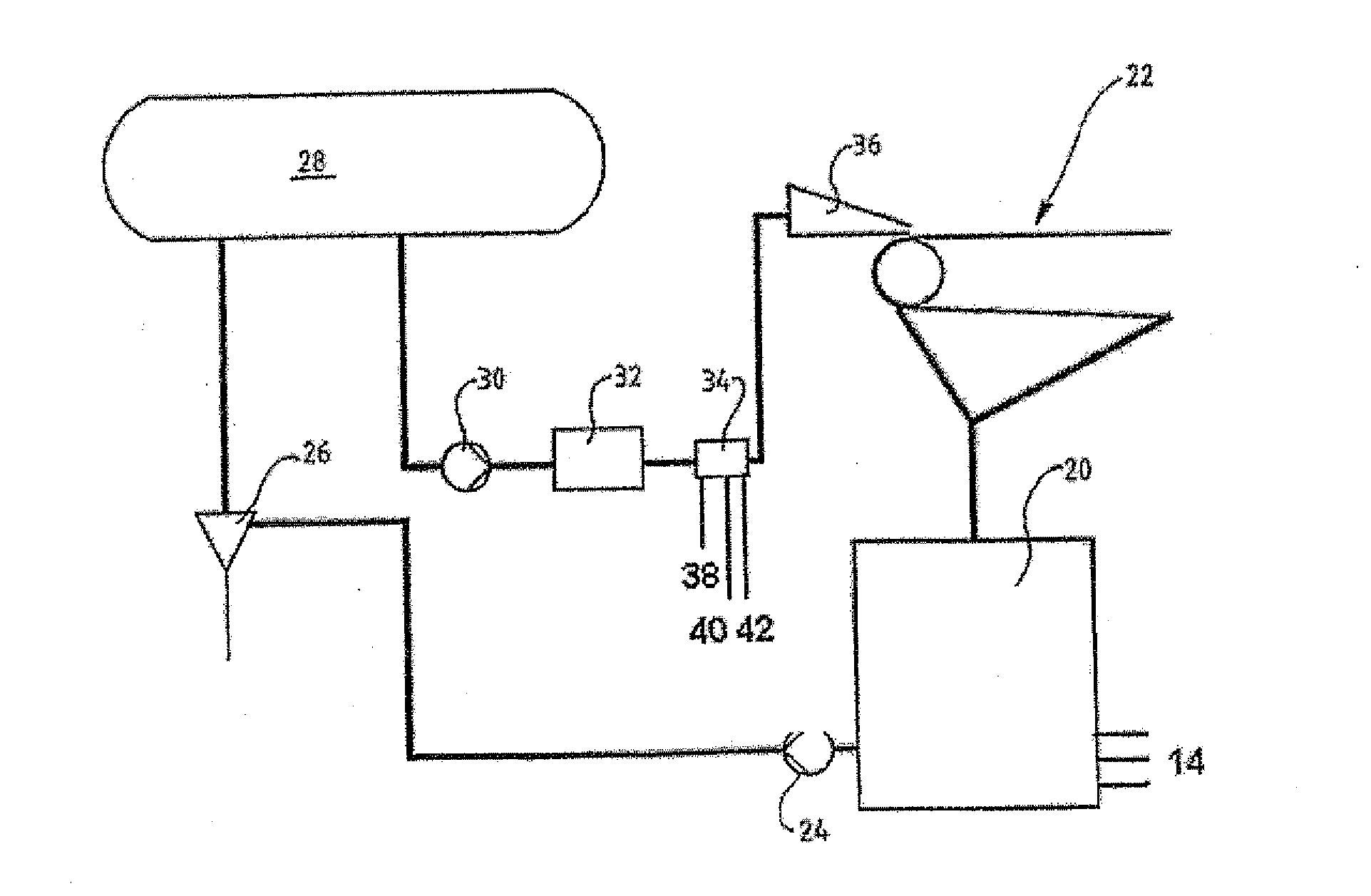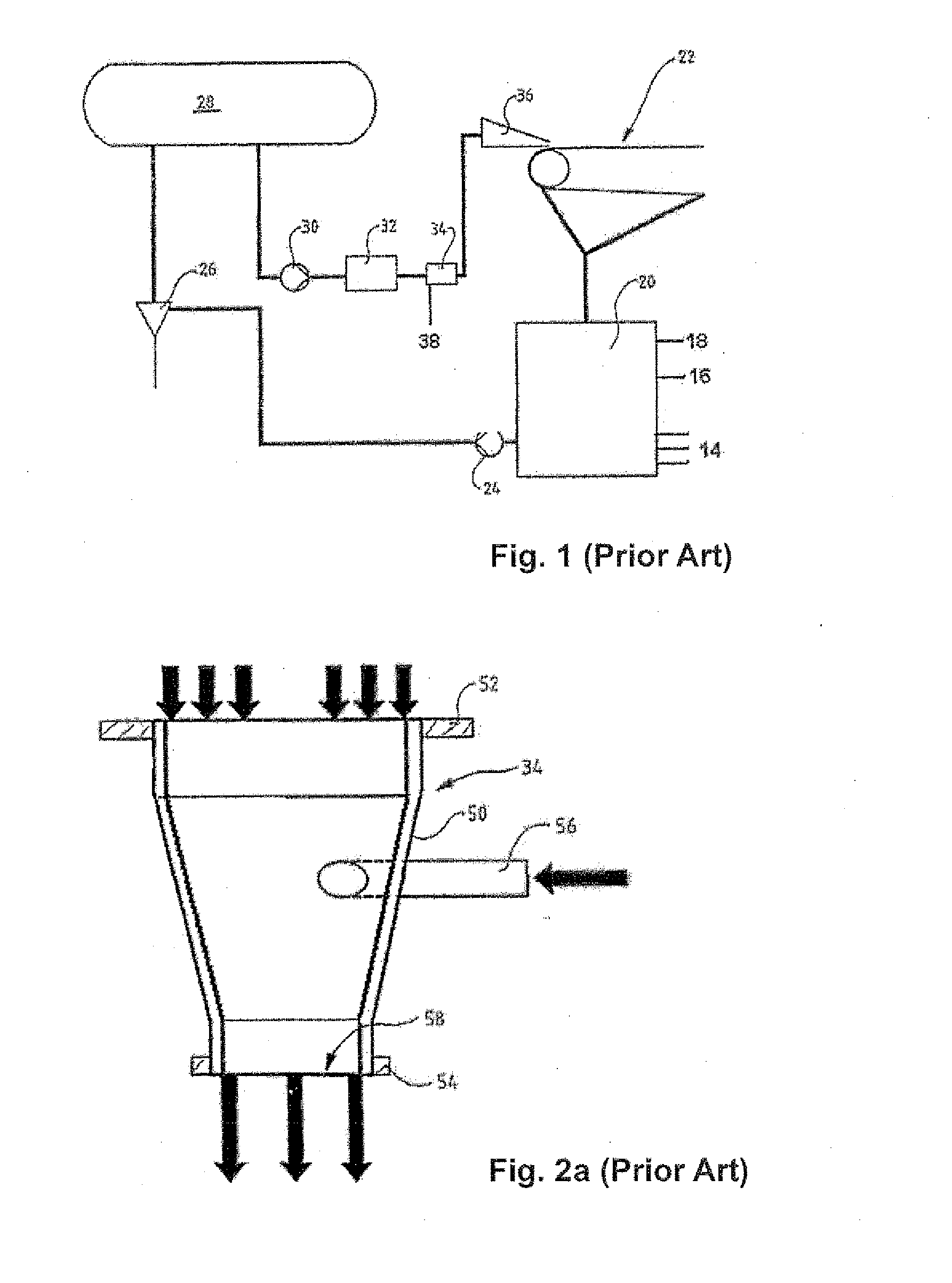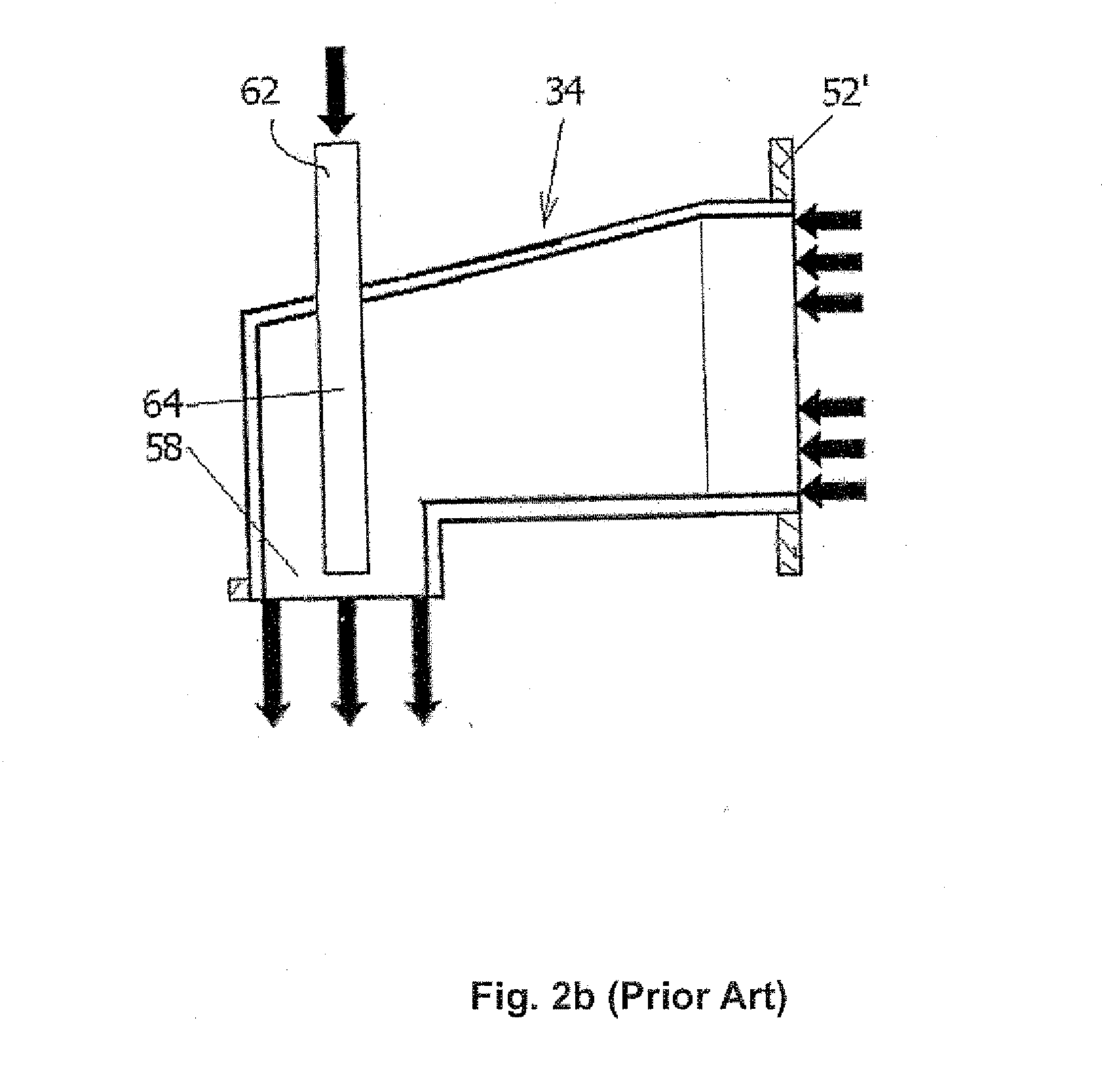Method and apparatus for feeding chemicals into a process liquid flow
a technology of process liquid and chemical feed, which is applied in the direction of chemical/physical processes, textiles and paper after-treatment, etc., can solve the problems of uneven product quality, poor success, and weak retention ability, and achieve the effects of reducing the efficiency of chemicals, and reducing the cost of production
- Summary
- Abstract
- Description
- Claims
- Application Information
AI Technical Summary
Benefits of technology
Problems solved by technology
Method used
Image
Examples
Embodiment Construction
[0038]According to FIG. 1, the prior art short circulation process arrangement works so that paper pulp to be fed to a paper machine, which is generally illustrated by a wire section 22, is diluted to the applicable consistency in a wire pit 20 with white water from the paper machine 22, although a separate mixing tank may also be utilized. Other suitable liquids may be used for dilution too, if desired, as for instance filtrate from a white water filter. Thus, both various fiber fractions 14, which the paper to be manufactured is desired to contain and various additives and filler 16, the use of which both saves valuable fibers and gives the paper desired properties such as for example brightness / opacity, gloss, moisture resistance, etc are brought to the wire pit 20. All these and possibly also at least a portion 18 of the retention chemicals are mixed in the wire pit with a mixer suitable for that purpose, to form a homogenous suspension. From the wire pit 20, the fiber suspensio...
PUM
| Property | Measurement | Unit |
|---|---|---|
| time | aaaaa | aaaaa |
| distance | aaaaa | aaaaa |
| homogenous | aaaaa | aaaaa |
Abstract
Description
Claims
Application Information
 Login to View More
Login to View More - R&D
- Intellectual Property
- Life Sciences
- Materials
- Tech Scout
- Unparalleled Data Quality
- Higher Quality Content
- 60% Fewer Hallucinations
Browse by: Latest US Patents, China's latest patents, Technical Efficacy Thesaurus, Application Domain, Technology Topic, Popular Technical Reports.
© 2025 PatSnap. All rights reserved.Legal|Privacy policy|Modern Slavery Act Transparency Statement|Sitemap|About US| Contact US: help@patsnap.com



